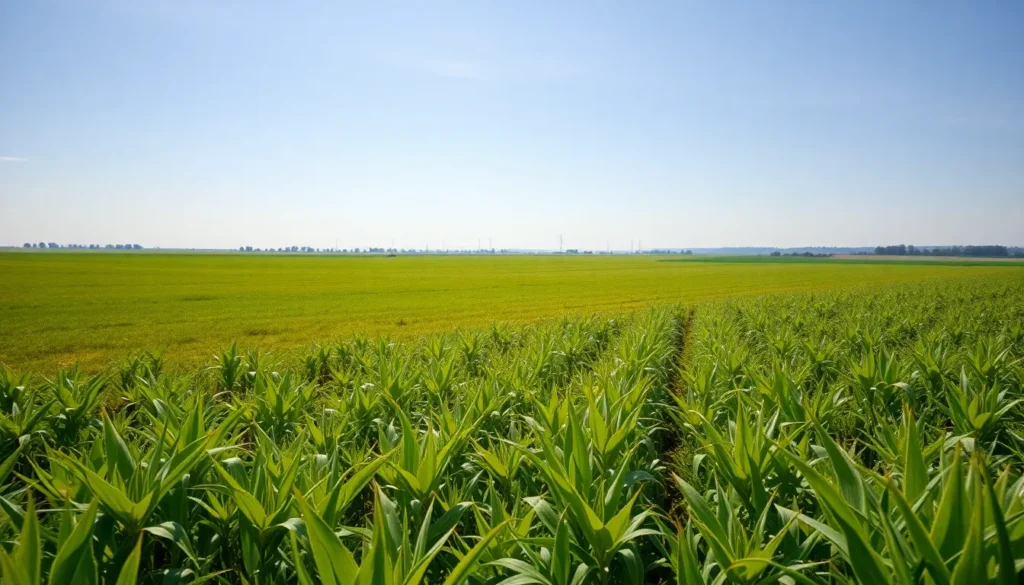In a world where everything seems to be connected, there’s a hidden hero making waves in the Internet of Things (IoT) landscape: Low Power Wide Area Networks, or LPWAN. Think of it as the tortoise in a race filled with hares, quietly enabling devices to communicate over long distances while sipping on battery power like it’s a fine wine.
Table of Contents
ToggleUnderstanding LPWAN
LPWAN stands as a significant technology within the Internet of Things (IoT) ecosystem. This technology enables devices to communicate over long distances while consuming minimal power.
What is LPWAN?
LPWAN refers to Low Power Wide Area Networks, designed to connect low-bandwidth devices over vast areas. These networks support various applications, such as smart city infrastructure and agricultural monitoring. It operates on different frequency bands, including sub-GHz frequencies, ensuring better range. LPWAN prioritizes low power consumption, making it ideal for battery-operated devices. Notably, this technology enables data transmission over several kilometers, which enhances coverage in remote areas.
Key Features of LPWAN
Specific features set LPWAN apart from other network options. First, the low power requirement allows devices to function on batteries for years. Second, LPWAN supports low data rates, making it suitable for applications that don’t need constant data streams. Next, its long-range capabilities make it possible to cover urban and rural landscapes efficiently. Security features in LPWAN ensure data encryption, protecting sensitive information. Lastly, scalability stands out as a core benefit, enabling the addition of more devices without degrading performance.
Applications of LPWAN

LPWAN plays an essential role in various sectors, enhancing connectivity and efficiency. Some notable applications include smart cities, agriculture, and industrial IoT.
Smart Cities
Smart cities leverage LPWAN to improve urban infrastructure and services. These networks enable real-time data exchange from connected sensors and devices. Traffic management systems monitor vehicle flow, reducing congestion. Waste management solutions track bin levels, optimizing collection routes. Additionally, environmental monitoring devices measure air quality and noise levels, enhancing residents’ quality of life. Energy management strategies utilize LPWAN to control lighting and manage energy consumption efficiently. With low-power capabilities, devices can operate for years without frequent maintenance.
Agriculture
In agriculture, LPWAN significantly enhances productivity and resource management. Wireless sensors monitor soil moisture, allowing farmers to make informed irrigation decisions. Crop health assessments use data from remote sensors, leading to better yield predictions. Livestock tracking employs LPWAN to monitor animal locations and health metrics, ensuring their well-being. Weather stations powered by LPWAN provide real-time climate data, helping farmers adapt to changing conditions. These solutions reduce resource waste while increasing overall agricultural efficiency.
Industrial IoT
Industrial IoT applications benefit from LPWAN’s long-range capabilities, enabling widespread device connectivity. Assets like machinery and storage containers track performance and location, facilitating efficient operations. Predictive maintenance systems utilize LPWAN data to identify equipment failures before they occur, minimizing downtime. Supply chain management relies on LPWAN for real-time inventory tracking, optimizing logistics. Environmental compliance becomes simpler with continuous monitoring of emissions and other regulatory metrics. The low power requirements ensure devices remain operational in remote industrial settings.
Comparison with Other Technologies
LPWAN stands out among various connectivity solutions. Its unique characteristics make it particularly suited for specific applications compared to other technologies.
LPWAN vs. Wi-Fi
LPWAN operates at longer ranges than Wi-Fi, which typically covers limited areas. While Wi-Fi requires more power, LPWAN excels with its low energy consumption. Devices using LPWAN often function on batteries for years, making them ideal for remote deployments. Data rates for Wi-Fi are higher, but LPWAN’s lower data rates fit the needs of occasional data transmission, perfect for sensor monitoring. Network congestion significantly impacts Wi-Fi performance, whereas LPWAN maintains effective connectivity even in dense environments.
LPWAN vs. Cellular Networks
Cellular networks provide extensive coverage but often involve higher costs and greater power demands compared to LPWAN. LPWAN significantly reduces operational expenses for low-bandwidth applications, delivering long-range communication at lower costs. While cellular networks support higher data rates suited for voice and video, LPWAN supports minimal data transmission, making it efficient for IoT devices. Deployment of LPWAN is quicker and simpler, particularly in rural or underserved areas. In contrast, cellular infrastructure may require significant investments, making LPWAN a more attractive option for many IoT applications.
Advantages of LPWAN
LPWAN offers several distinct benefits that make it a preferred choice for numerous IoT applications. These advantages include cost efficiency, extended range, and low power consumption.
Cost Efficiency
Cost efficiency ranks high among LPWAN’s advantages. Implementing LPWAN technology reduces infrastructure expenses since it covers large areas with fewer gateways. Organizations benefit from lower operational costs due to minimal maintenance needs. Such savings enhance feasibility for projects, particularly in rural or underserved regions. By utilizing existing cellular networks and unlicensed frequency bands, companies can further reduce deployment expenses. Overall, LPWAN provides a budget-friendly option for connecting a range of devices and applications.
Extended Range
Extended range features prominently in LPWAN’s capabilities. This technology can transmit data over several kilometers, even in urban environments with obstacles. Longer distances mean fewer required base stations, contributing to lower deployment costs. Enhanced penetration allows connection in remote areas where traditional networks fail. Devices can reliably communicate, even when stationed miles apart. Consequently, LPWAN enables effective monitoring and management for industries requiring vast coverage.
Low Power Consumption
Low power consumption distinguishes LPWAN from other communication technologies. Devices powered by LPWAN can operate on batteries for several years without recharging, making it ideal for remote sensor applications. The reduced energy requirements ensure minimal environmental impact while supporting continuous operation. Such efficiency benefits organizations by lowering energy costs and extending the lifespan of equipment. With devices that require infrequent maintenance, LPWAN presents a sustainable solution for long-term connectivity.
Challenges and Limitations of LPWAN
LPWAN, despite its advantages, faces several challenges and limitations that can impact its effectiveness in various applications.
Scalability Issues
Scalability presents a challenge in LPWAN deployments. While LPWAN can support a large number of devices, certain network architectures may struggle as device density increases. Increased interference from overlapping signals can occur when too many devices are connected, leading to reduced performance. Additionally, some LPWAN protocols exhibit limitations on maximum device connections per gateway, affecting scalability in dense urban environments. As devices pile up, potential latency and data collisions can compromise the quality of service. Network management thus becomes critical, requiring efficient strategies for load balancing and performance monitoring.
Data Transfer Speeds
Data transfer speeds in LPWAN networks are inherently low. Low bandwidth is suitable for infrequent data transmissions, but it limits high-speed applications. Typical data rates range from 0.3 kbps to 50 kbps, which may not suffice for real-time data needs. Critical applications like video surveillance or high-frequency monitoring face significant constraints due to these limitations. As a result, LPWAN isn’t designed for continuous data streaming or large file transfers. Prioritizing specific use cases becomes essential to maximize its efficacy, especially where low data rates represent a significant trade-off.
LPWAN stands out as a vital technology in the ever-evolving IoT landscape. Its ability to connect low-power devices over long distances makes it indispensable for applications in smart cities agriculture and industrial environments. With its low power consumption and cost efficiency LPWAN enables extensive coverage while minimizing environmental impact.
Despite some challenges like scalability and data transfer limitations LPWAN’s advantages make it a preferred choice for many IoT deployments. As the demand for efficient connectivity continues to grow LPWAN will likely play an increasingly significant role in shaping the future of connected devices and smart solutions. Embracing this technology opens up new possibilities for innovation and efficiency across various sectors.










